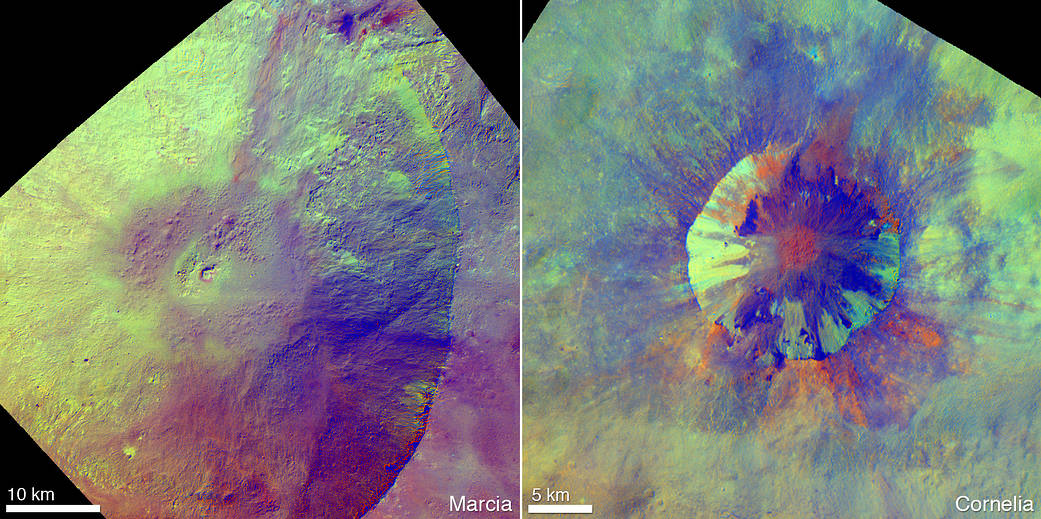
These enhanced-color views from NASA’s Dawn mission show an unusual “pitted terrain” on the floors of the craters named Marcia (left) and Cornelia (right) on the giant asteroid Vesta. The views show that the physical properties or composition of the material in which these pits form is different from crater to crater.
Scientists assigned specific ratios of wavelengths of reflected light to different colors to show variations in the minerals on the surface. In this color scheme, green areas indicate areas that are primarily composed of silicate minerals rich in magnesium and iron. Red and blue areas indicate the relative predominance of bluer wavelengths compared to redder wavelengths, which arises from differences in composition, grain size or space weathering. Blue regions appear to have a higher component of the hydrated, carbon-rich material deposited on Vesta’s surface.
Scientists think low-speed collisions with carbon-rich meteorites left hydrated minerals on Vesta’s surface. It is thought that heat generated during later, high-speed collisions with asteroid belt rocks released water that was previously bound within the hydrated minerals. This water is thought to have explosively degassed into space, leaving behind pothole-like depressions as it escaped.
Image credit: NASA/JPL-Caltech/UCLA/MPS/DLR/IDA/JHUAPL

























